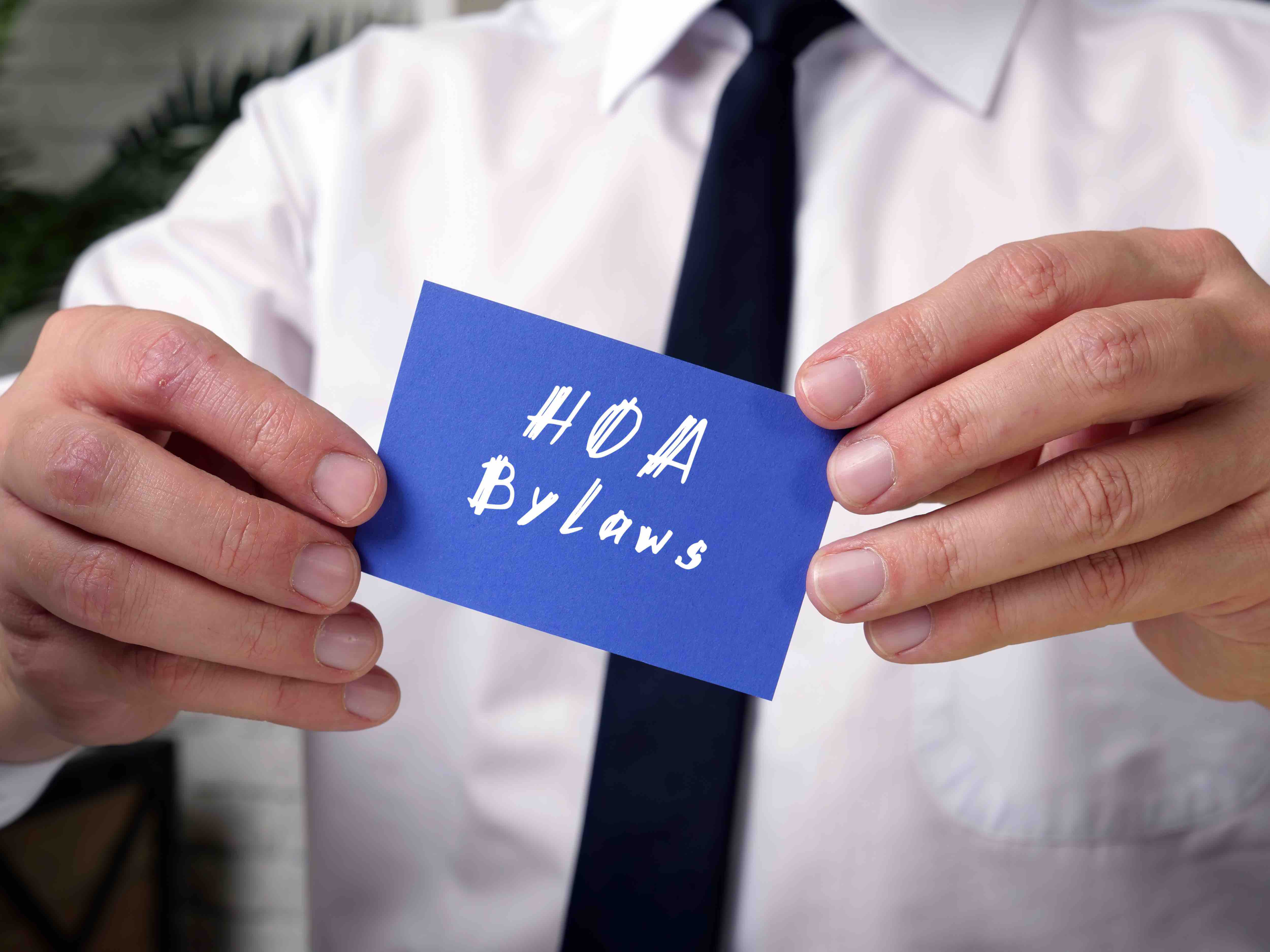
Planning a successful Homeowners Association (HOA) annual meeting can be a daunting task. It requires careful attention to detail, adherence to governing documents, and effective communication with community members. Yet, when executed properly, a well-organized annual meeting can foster a sense of community, encourage active participation, and ultimately improve the wellbeing of all residents. In this blog post, you will learn practical tips and strategies that will help you plan and execute an engaging and productive HOA annual meeting.
Key Highlights
- Understand HOA Governing Documents and review key components prior to the meeting.
- Set the date and time of your annual meeting in accordance with bylaws or CC&Rs, promote it through traditional & digital channels, manage proxies & encourage attendance.
- Engage homeowners during the meeting, follow up With minutes distribution, tracking action items and collecting feedback for improvement.
Suggested Posts:
Understanding HOA Bylaws & CC&R Rules & Regulations
Residential Gate Access Control Systems – Complete Guide
Apartment Buzzers – Comprehensive Guide and Buyer Tips (2023)
Understanding Your HOA Governing Documents

Before diving into the specifics of planning your annual meeting, it’s crucial to thoroughly understand your HOA’s governing documents. These documents serve as the foundation for how your HOA operates and ensure that annual meetings, as well as board meetings, are conducted in compliance with state laws and regulations. Reviewing key components, such as notification, quorum, and voting stipulations, can help guarantee a smooth and successful meeting.
Additionally, involving association members in the process is critical, as the decisions made by the HOA board will directly impact their quality of life and property value.
Importance of Governing Documents
Governing documents are essential for preserving the unity of the community and responding to homeowner inquiries during meetings. They provide clarity on the association’s rules and regulations, which can help prevent conflicts and misunderstandings. If board members need assistance in understanding the association’s governing documents, they can turn to professional property management companies and association counsel for guidance.
Consulting with an attorney before mailing meeting notices can also ensure that all documents are verified and in compliance with the law. Following proper meeting procedures, such as Robert’s Rules of Order Newly Revised, will ensure that the meeting runs smoothly and fairly.
Key Components to Review
When reviewing your HOA’s governing documents, it’s important to examine the frequency of membership meetings, the location, the quorum, and the expectations of homeowners. Before the annual meeting, it is essential that association members read through the minutes of the last meeting, the proposed budget with its financial statements, the slate of nominees for election and any other proposals that require the members’ votes. Doing so will help them make an informed decision during the voting process.
Being well-prepared and informed will help ensure board accountability and compliance with governing documents. This will help ensure that the board is acting in the best interests of the association and its members.
Setting the Date and Time for Your HOA Annual Meeting
Selecting the appropriate date and time for your annual meeting is essential for maximizing homeowner turnout and complying with bylaws. Bylaws or CC&Rs typically specify annual meeting date requirements, which can guide your planning process. Consider holding the meeting close to the end of the fiscal year, such as in the Autumn or Spring.
Establishing the date well in advance allows for proper planning and timely dissemination of information to homeowners. Providing ample notice, around 60 days prior to the meeting, gives association members enough time to plan and make arrangements to attend.
Factors to Consider
When determining the date and time for your HOA annual meeting, consider factors such as the availability of board members, the size of the community, and the HOA guidelines for notice. Additionally, take into account the season, holidays, and vacations to ensure that the majority of homeowners can attend. Planning HOA annual meetings is essential for a successful event.
Establishing the date well in advance and notifying the association membership allows homeowners to reserve the time in their calendars, boosting attendance and participation.
Polling Homeowners
To help determine the most suitable date and time for the majority of homeowners, consider conducting a brief poll. This can be done through various digital platforms or postal mail, allowing homeowners to express their preferences and availability.
By polling homeowners and taking their input into consideration, you can ensure a higher turnout and more engaged community members during the annual meeting.
Crafting a Comprehensive Agenda

Creating a well-organized and comprehensive agenda is key to running a productive annual meeting. The agenda should encompass all topics of discussion and association business to be conducted, ensuring that nothing important is left out. To maintain the meeting’s progress and keep homeowners informed, finalize the agenda at least 30 days prior to the meeting.
A well-prepared agenda will not only help the meeting run smoothly, but also prevent any dissatisfaction that may arise from a poorly planned meeting.
Prioritizing Topics
When crafting the agenda, prioritize topics based on their importance and relevance to the community. This may include reviewing the association’s annual budget, providing a platform for board member elections, and addressing any other matters that require the attention of the entire membership.
Distribute the agenda early enough to allow members the opportunity to review it and consider any questions they may have before the meeting.
Allowing Time for Discussion
To encourage homeowner engagement and ensure a productive meeting, allocate sufficient time for discussion and questions on each agenda item. This may vary depending on the number of agenda items and the size of the HOA. For larger groups, ninety minutes may be necessary, with thirty minutes for the executive session.
Incorporating additional time into the overall meeting schedule allows for thorough discussion and a more inclusive meeting experience for all attendees.
Promoting Your HOA Annual Meeting
Promoting your HOA annual meeting is essential for raising awareness and boosting attendance. Utilizing both traditional and digital channels can help you effectively advertise the meeting and ensure that all community members are informed.
Early notification is crucial, as it allows homeowners to add the meeting to their calendars well in advance and increases the likelihood of their attendance.
Traditional Methods
Traditional methods of promoting the HOA annual meeting include sending out physical invitations, specifying a start and end time in the meeting notice, and advertising the meeting like any other community event. Offering incentives for attendance, such as refreshments or door prizes, can also help attract more homeowners to the meeting.
Don’t forget to include the date, time, and location of the meeting in newsletters, on bulletin boards, and on the association’s website to ensure maximum exposure.
Digital Channels
Utilizing digital channels, such as email and social media platforms like Facebook, can also be beneficial for promoting the HOA annual meeting. A community manager can share photos from community events, announce upcoming events, and provide residents with a platform to communicate with one another.
Additionally, digital channels can be used to engage homeowners during the meeting through interactive activities, such as polls and surveys, and provide a platform for homeowners to ask questions and give feedback. After the meeting, use these channels to distribute meeting minutes, track action items, and collect feedback from homeowners.
Ensuring a Quorum

Ensuring a quorum, or the minimum number of members necessary to be present for the association to conduct business, is crucial for a successful HOA annual meeting. Achieving a quorum allows the board to conduct official business, such as board elections and voting on important matters.
To ensure a quorum, adhere to the specified meeting notice requirements outlined in the community’s governing documents and local statutes, and consider forming a committee to encourage attendance.
Encouraging Attendance
Highlight the importance of the annual meeting and provide incentives like refreshments or guest speakers to encourage homeowners to attend. Be creative and consider commemorating special events or milestones, such as the inauguration of a new amenity center or the completion of major projects.
Additionally, provide clear and timely communication about the meeting, allowing homeowners to plan their attendance and prepare any questions or concerns they may have.
Managing Proxies
Proxies, which are documents allowing one association member to cast a vote on behalf of another, can be used to help ensure a quorum. Manage proxies effectively to guarantee accurate representation of homeowner votes.
Collaborate with a legal representative or the legal advisors of your association management company to ensure proper proxy setup and distribution. Include the necessary information, such as the homeowner’s name, address, and signature line, on the return envelopes for ballots.
Engaging Homeowners During the Meeting

Fostering a sense of community and encouraging active participation during the meeting are key factors in a successful HOA annual meeting. Engaging homeowners through interactive activities, addressing concerns and questions, and providing a platform for discussion can help create a positive and productive experience at hoa meetings and improve hoa annual meetings.
By creating an atmosphere of collaboration and open dialogue, homeowners can feel more connected to their HOA.
Interactive Activities
Incorporate interactive activities during the meeting to keep homeowners engaged and foster a sense of community. Icebreaker activities, such as the One Word Game or Beach Ball Toss, can help attendees get to know one another and create a more relaxed atmosphere.
Additionally, consider holding a Q&A session or integrating it into a social event to involve community members in the conversation.
Addressing Concerns and Questions
Addressing concerns and questions promptly and professionally is essential for maintaining a positive atmosphere during the meeting. Be attentive to the needs and concerns of homeowners, and ensure that their questions are answered thoroughly and accurately. This demonstrates to homeowners that their opinions and ideas are valued and taken into consideration, fostering trust and involvement between the HOA and its members.
By responding to questions and concerns in a timely and professional manner, homeowners will feel that their opinions will be respected.
Post-Meeting Follow-Up
Following the annual meeting, it’s important to maintain transparency and track progress on action items discussed during the meeting. Distributing minutes, tracking action items, and collecting feedback from homeowners are essential steps to ensure continued improvement and engagement in the community.
These steps can help to ensure that the community is informed and engaged in the decision-making process.
Distributing Minutes
Distribute meeting minutes to all homeowners, including those who were unable to attend, as soon as possible after the meeting. This allows homeowners who were not present to stay informed about the proceedings and decisions made during the meeting.
Meeting minutes should include a summary of the topics discussed, the decisions made, and who is responsible for implementing the new policies and actions.
Tracking Action Items
To ensure that action items are completed in a timely manner, assign responsibilities to specific individuals or groups and track their progress. Regularly check in with those responsible for completing tasks to guarantee that the work is being done and to address any issues or challenges that may arise. This helps maintain accountability and ensures that the decisions made during the meeting are implemented effectively.
Collecting Feedback
Collecting feedback from homeowners is crucial for continuously improving future meetings and fostering a sense of community involvement. Distribute a survey or feedback form to attendees to gather their opinions and suggestions on the meeting’s organization, content, and overall experience.
Respond to the feedback received and use it to make improvements and adjustments for future meetings.
Utilizing Professional Assistance
Utilizing professional assistance, such as an HOA management company, can greatly help in planning and executing successful annual meetings. Experienced professionals can provide guidance and support in various aspects of HOA management, including meeting planning, agenda creation, and compliance with governing documents and state laws.
Having a professional on board can help ensure that the meeting is conducted in an efficient and effective manner.
Benefits of Professional Help
Professional help can ease the burden on board members and ensure compliance with governing documents and state laws. They can also provide expertise in areas such as HOA governance, financial management, and legal compliance. Making the planning and execution of the annual meeting a smoother and more efficient process.
Selecting the Right Partner
When selecting a partner for professional assistance with an HOA annual meeting, consider their experience in HOA management and their established record of success. A reliable and experienced partner can provide valuable guidance and support throughout the planning process, ensuring a successful and well-organized annual meeting that benefits the entire community.
This partner should be able to provide advice on topics such as meeting agendas, voting procedures, and more.
Summary
Planning a successful HOA annual meeting requires careful attention to detail, effective communication, and a commitment to engaging and involving community members. By understanding your HOA’s governing documents, setting the right date and time, crafting a comprehensive agenda, promoting the meeting, ensuring a quorum, engaging homeowners during the meeting, and following up after the meeting, you can create a positive and productive meeting experience for everyone involved. Remember, a well-organized annual meeting can foster a sense of community, encourage active participation, and ultimately improve the wellbeing of all residents.
Frequently Asked Questions
Why is the HOA annual meeting important?
Attending the annual HOA meeting is important as it provides an opportunity to keep up to date with information about the budget, state of the community and upcoming projects for the year.
It is essential for successful governance of any homeowners association.
What do people talk about at HOA meetings?
HOA meetings typically cover topics such as financials, property, residential living, and more, all based on the governing state laws. As a result, the structure and organization of the meetings can vary.
What is the annual meeting of the HOA in Florida?
The annual meeting of the HOA in Florida is a general gathering for members to discuss current issues, review the budget, outline upcoming projects and report on initiatives from the past year.
At the meeting, members can voice their opinions and concerns, as well as ask questions and provide feedback. The board of directors will also present their plans for the upcoming year and discuss any changes that need to be made.
The meeting is an important opportunity.
How can I ensure compliance with governing documents and state laws when planning an HOA annual meeting?
Engaging professional assistance, such as an HOA management company, can help ensure compliance with governing documents and state laws when planning an HOA annual meeting.
This can help ensure that the meeting is conducted in a manner that is fair and transparent to all members. It can also help to ensure that the meeting is conducted in a timely manner and that all members are given the opportunity to participate.
What are some ways to encourage attendance at HOA annual meetings?
Emphasize the significance of attendance, offer rewards such as snacks or guest speakers, and inform homeowners in advance to encourage attendance at HOA annual meetings.
Rewards can be used to incentivize homeowners to attend the meeting. Snacks can be provided to those who attend, or a guest speaker can be invited to give a presentation. Informing homeowners in advance of the meeting date and time can be helpful.
Upgrade Your Building Security
Get in touch with a Swiftlane specialist for more information on the best access control and video intercom solution for your building.




